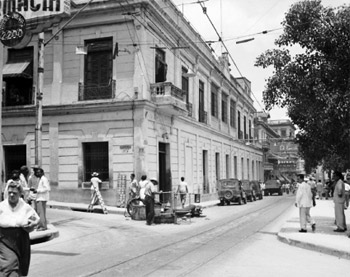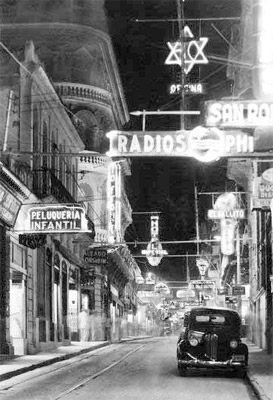Santiago de Cuba over the Passage of Time
Janis Hernandez

HAVANA TIMES, March 2 — A close friend of mine sent me a folder with hundreds of archival photographs of earlier Santiago de Cuba. The city captured by the lens of people who lived in those distant times.
These included images as interesting as the three of Arches of Triumph that the city had in 1878. This was an epoch when the streets had names very different from the ones today, which I have to admit was something about which I had no idea.
Likewise, they showed the “Plaza de Toros” (the bullfighting arena) that existed in 1899 on the “Paseo de Concha,” currently Marti Boulevard.
In addition were shots of the building of the Socapa Aqueduct in 1954, the first landing of a plane at the city’s airport in 1953 and the laying of the foundation of the Alameda Michelson esplanade in 1952.

There were many things that took me by surprise when looking at those photos. Some sites could be recognized because they’ve changed very little, except for perhaps the little or non-existent foliage in the backgrounds.
Other places unfortunately no longer exist. Some collapsed in the earthquakes that hit the city in the late nineteenth century and in 1953. The rest of those that are gone were exposed to neglect and indolence, resulting in the loss of truly monumental works with fascinating architecture.
I found it delightful to see men wearing their old-fasion “jipijapa” (Panama) hats of the pseudo-Republican 1920s and ‘30s, or archaic cars called “fotingos” driving down the hill on Puerto de Boniato Road in a 1937 photograph.
I had the idea of sharing these images with the readers, but as some of these photos are archived, publishing those images might be unethical.

However, I figured that if I were to create some model with certain parts of the old Santiago seen in black and white shots and current Santiago seen through digital photography, this would be an acceptable form of photojournalism.
This was how I choose to work on 25 locales, among them streets, plazas and other sites with which I was already familiar. I’ve struggled a bit in trying to take snapshots that are as faithful as possible.
What stands out most in this material is how little the city has developed over the last fifty years; most of its buildings date back from the colonial or the Republican (1902-1959) periods.
In any case, through these photos I invite you to appreciate my Santiago de Cuba, almost unchanged over time.
Click on the thumbnails below to view all the photos in this gallery. On your PC or laptop, you can use the directional arrows on the keyboard to move within the gallery. On cell phones use the keys on the screen.






























What a wonderful way of sharing your city. I am shortly going back to Santiago for a long holiday and your photos have given new life to my appreciation of the history of the city. Of course the history is obvious in the architecture, but these comparative pix make it more accessible. Thank you!
Thanks for sharing these fotos, Janis! Some of them (the ones where almost nothing has changed) remind me of the haunting “time travel” novels of Jack Finney, such as TIME AND AGAIN, TIME AFTER TIME. Unlike the protagonist in H.G. Wells’s THE TIME MACHINE, the Finney’s novels the protagonist is able to go back in time through placing himself in a deep hypnotic state–but he must place himself at a location that has little changed since the era to which he wishes to return. In m;y favorite work, he travels from the current Dakota Apartment Building (where lived John Lennon), circa the 1970’s, back to Central Park West of the 1870’s, where he meets, and falls in love with, a girl from that epoch. In the end, he prefers the past to the present…but of course, like the protagonist in Alejo Carpentier’s THE LOST STEPS, he is unable to return!